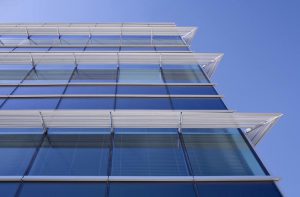Building Construction Industry
The construction industry has made great strides in improving building construction.
New building codes and credits for Green Buildings have resulted in more energy efficient buildings and the use of recyclable materials for greater sustainability.
However these advances have not necessarily improved the indoor air quality (IAQ). Modern homes and offices are frequently more airtight than older structures resulting in reduced exchanges between outdoor fresh air and indoor air.
Furthermore, modern buildings make greater use of synthetic building materials that have introduced new contaminants such as volatile organic compounds (VOC), which arise from sources such as paints, varnishes, solvents and preservatives.
The combination of reduced ventilation and the increase in volatile compounds has the potential for a buildup of toxic substances in the home environment.
In the USA as in many other countries, no federal law specifically regulates IAQ, even though people typically spend more than 90% of their time indoors.
Pollutant levels are typically several times to several hundred times higher indoors than outdoors, and consequently indoor air typically accounts for over 90% of human exposure to pollutants.
Building Certification Programs
Green Building Certification programs have increased globally with over 145,000 green certification projects concluded as of 2016 and are forecast to grow by 37% by the end of 2018.The European Union Directive of Energy Performance of Buildings foresees that by the end of 2020 all new buildings should comply with the goal of nearly zero energy performance.[1]
The major Green Building Certification Programs include the Building Research Establishment Environmental Assessment Methodology (BREAM) in the United Kingdom and the Leadership in Energy and Environmental Design (LEED) in the USA. These programs are used in multiple countries around the world. Other significant programs are the Comprehensive Assessment System for Built Environment Efficiency (CASBEE) in Japan and recently (2016) the Deutsche Gesellschaft für nachhaltiges Bauen (DGNB) system in Germany. However there is no standard criteria that is used universally to define a Green Building. Different systems emphasize different Building characteristics.
But these projects, which give credits to builders for compliance, emphasize efficient use of resources (e.g., energy, water and materials) and sustainability.
But not much incentive is given for improving Indoor Air Quality (IAQ).A recent study found that credits for IAQ accounted for only about 3 to 11% of the total credits.
This relative small percentage of credits for IAQ may be seen as inadequate incentive to pursue these credits.
Green Buildings and Health
Updates to the early Green Building Certification Systems now provide more weight to IAQ. Furthermore, other programs such as the WELL Building Standards [2] are focused specifically on IAQ. Typically Green Building Certifications have different requirements or Categories that need to be met in order to get the Certification. Some of the requirements address Pollution Source Control, Ventilation, and limits for specific pollutants such as formaldehyde, CO2, Volatile Organic Compounds (VOC) s. In addition they may require IAQ measurements. But the majority of requirements emphasize energy savings, water usage, building air tightness, minimize environmental disruption, and sustainability.
Many certificate programs allow “trading” of credits between categories. It may be possible to obtain Green Building Certification without complying with any IAQ requirements. One program, the German DGNB, is the exception in that it does not allow credit trading. Some compliance in each category must be achieved to get their Certification.
One problem that undermines improvements in the levels of IAQ in Green Buildings is that there is no consensus on what good IAQ is, or what factors affect the health of the occupants. Another problem is that some of the “green practices” used in the construction of Green Buildings have negative effects on the IAQ. In example using recycled materials may introduce in the building pollutants or toxic chemicals originated in the recycling process. Another example is the required use of green cleaning products for building maintenance. Many of the so called green cleaning products do not list all of their ingredients and may include fragrances. Fragrances are chemical additives that are dangerous pollutants that, when combined with ozone, can create secondary pollutants that have been proven to affect the health because of their microscopic particles that easily penetrate the respiratory system. In fact the US Centers for Disease Control and Prevention, Indoor Environmental Quality Policy states: “Scented or fragranced products are prohibited at all times in all interior space owned, rented, or leased by CDC” [3]. Green Buildings have the potential to be beneficial to Health. However, we are not there yet. Progress is slow. It is up to us to control the pollution generated in our homes and to insure that we have adequate ventilation.[4]

Conclusion
It is my conclusion that we cannot rely on government programs to improve IAQ.
Improving indoor air quality of our homes is our individual responsibility.
Adding an Air Purifier can be part of our plan of action.
Click here to find out how you can check the air quality in your home.
References
[1] Anne Steinemann et al. Ten Questions concerning Green Buildings and indoor air quality.Building and Environment 112 (2017) 351-358
[2] WELL,The International Well Building Institute.The WELL Building Standard,V 1.0,Delos Living LLC,New York,, NY.,2015
[3] CDC,US Centers for Disease Control and Prevention. Indoor Environmental Quality Policy,2009,pp.9-10
[4] https://improvingindoorairquality.com/ventilation-how-much-is-necessary

Carlos
carlos@improvingindoorairquality.com